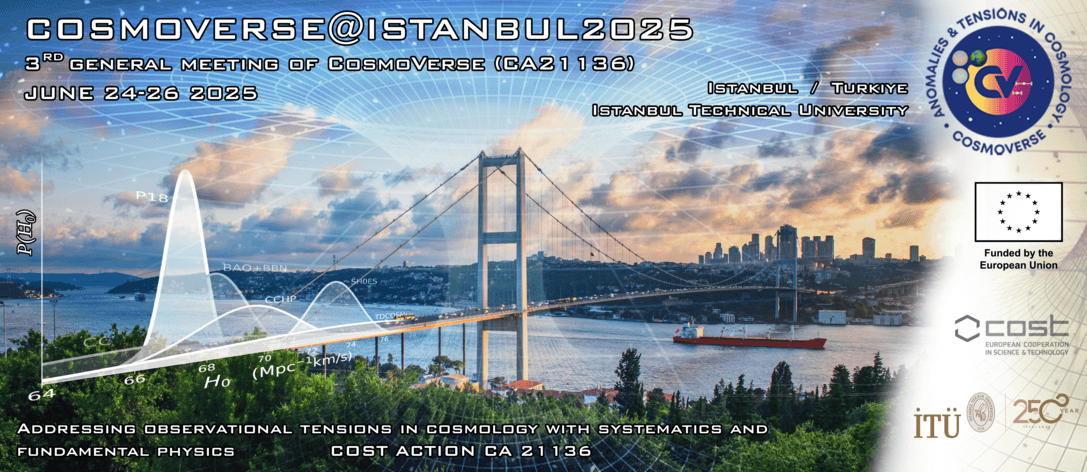Conveners
Afternoon session 1: (Tuesday)
- Tekin Dereli
Afternoon session 1: (Wednesday)
- Eleonora Di Valentino (University of Sheffield)
Afternoon session 1: (Thursday)
- Florian Beutler
One of the fundamental predictions of modern cosmology is that we should see the distant universe run slowly, with time dilated by the expansion of space. Numerous searches for this cosmic time dilation in the light curves of distant quasars, some of the most luminous objects in the universe, have failed to find the expected signal, with claims that this challenges the standard cosmological...
We present a comprehensive statistical framework for cosmological parameter estimation, focusing on Baryon Acoustic Oscillation (BAO) analyses in the light of the DESI DR2. We focus on two complementary directions: the performance evaluation of various sampling algorithms and the investigation of likelihood formulations. We will discuss the role of the choice of a sampler in both its...
I will present a series of works looking for evidence of the effects induced by seemingly different extensions to the standard cosmological model in the cosmic microwave background (CMB) primary and secondary anisotropies: modified gravity, massive neutrinos and non-vanishing spatial curvature. By looking at their correlations and the differences in the impact they have on cosmological...
Baryon Acoustic Oscillations (BAO), together with Type Ia Supernovae (SNeIa), increasingly disfavor late-time modifications as viable resolutions to the Hubble tension. A key argument against post-recombination solutions—the so-called “no-go theorem”—relies critically on BAO data: since BAO constrain angular scales proportional to rdH0, a higher H0 implies a smaller rd, in tension with the...
Combinations of the most recent CMB, BAO, and SNeIa datasets, when analyzed using the CPL parametrization, $w(a) = w_0 + (1 - a) w_a$, exclude $\Lambda$CDM at $\gtrsim3\sigma$ in favor of a dark energy equation of state (EoS) parameter that crosses the phantom divide. We confirm this behavior and show that it persists when DESI BAO data are replaced by SH0ES $H_0$ measurements, despite the...
Hydrodynamic simulations will be instrumental in attempting to resolve cosmological tensions such as the $S_8$ tension as they can assist with modelling key sources of uncertainty such as galaxy bias. However, for these purposes, the simulations need both large box size and high resolution, which is computationally prohibitive. In this work we instead use the connection between galaxies and...
In the era of high precision Cosmic Microwave Background (CMB) anisotropy measurements, detection of the primordial graviational waves (PGW) will be one of the main goals of the upcoming CMB experiments. To make it possible precise cleaning of the CMB maps from diffused contamination coming from polarised galactic emission and CMB gravitational lensing effect is needed. We investigate the...
The effect of gravitational lensing of the Cosmic Microwave Background
(CMB) provides a unique opportunity to obtain a picture of the gravitational potential of the large-scale structure of the Universe at very high redshifts. Tomographic cross-correlation of the gravitational potential with other tracers of the large-scale structure at known redshifts allows tracing the evolution of the...

